From December 3 to 6, 2025, Nitra will host the 35th symposium entitled “Grundprobleme der frühgeschichtlichen Entwicklung im mittleren Donauraum” (Fundamental Problems of Early Historical Development in the Middle Danube Region). The first in a long series of meetings was held in 1988 at the University of Vienna. It aimed to stimulate the exchange of ideas and strengthen cooperation between Central European researchers specialising in the La Tène, Roman, and Migration periods. The successful first event gave rise to a tradition of annual meetings and discussions on current topics in early historical archaeology in the Middle Danube region. This year’s meeting is hosted and organised by the Institute of Archaeology of the Slovak Academy of Sciences, in cooperation with its traditional partner institutions.


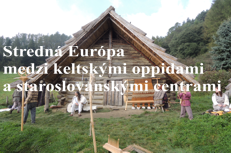
Home
29th International Conference on the Early and Middle Bronze Age in Central Europe, Just in a Few Days
 From 13 to 16 October 2025, the 29th International Conference on the Early and Middle Bronze Age in Central Europe will take place in Stará Lesná, organized of the Institute of Archaeology SAS with the support of the Slovak Archaeological Society SAS.
From 13 to 16 October 2025, the 29th International Conference on the Early and Middle Bronze Age in Central Europe will take place in Stará Lesná, organized of the Institute of Archaeology SAS with the support of the Slovak Archaeological Society SAS.
The event will bring together nearly 70 specialists, offering an inspiring program focused on the latest research and discoveries related to the Early and Middle Bronze Age in Slovakia, the Czech Republic, Austria, Poland, and Hungary.
The conference includes lectures, poster presentations, and discussions, all of which will undoubtedly contribute to a deeper understanding of this important period of prehistory.
Registration is necessary for the conference.
Institute of Archaeology at the European Researchers’ Night 2025
 The Institute of Archaeology of the Slovak Academy of Sciences once again took part in the European Researchers’ Night 2025, which was held at the Old Market Hall in Bratislava and carried the theme “Chaos.”
The Institute of Archaeology of the Slovak Academy of Sciences once again took part in the European Researchers’ Night 2025, which was held at the Old Market Hall in Bratislava and carried the theme “Chaos.”
At our interactive booth, we engaged visitors of all ages by showing how archaeology—through the use of carefully selected methods—can deal with the chaos of finds and information from the field and transform it into a coherent picture of the past.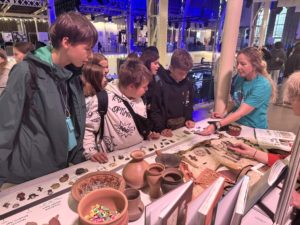
Together with us, participants had the opportunity to experience the work of an archaeologist by dating various artefacts from across all historical periods, from prehistory to the modern era. We demonstrated that even the apparent disorder of an archaeological site follows a system, and every find has its place and meaning in the mosaic of history.
Thank you to everyone who visited us and we look forward to seeing you again next year!
The 44th International Archaeological Conference “Neolithic and Eneolithic of Our Countries 2025” will take place
 The traditional conference dealing with current issues of the Neolithic and Eneolithic periods in Central Europe will take place in Zemplin museum, Michalovce (Slovakia) from September 23 to 25.
The traditional conference dealing with current issues of the Neolithic and Eneolithic periods in Central Europe will take place in Zemplin museum, Michalovce (Slovakia) from September 23 to 25.
The conference, with a rich program, consisting of talks, poster presentations, discussions, and a professional conference, will be attended by researchers from Slovakia, Bohemia and Moravia, Poland, Romania, and Austria.
You can download the program here
Registration for the conference is required.
The Institute of Archaeology of the Slovak Academy of Sciences invites you to lectures on current issues in European archaeology
The lectures will take place on August 19, 2025, at 1:00 p.m. in the building of the Institute of Archaeology of the Slovak Academy of Sciences in Nitra, Akademická 2, in the lecture hall near the entrance at the ground floor.
Lecture topics:
Vikings in the North Atlantic: The settlement of Scotland and Iceland
Dr. Rachel Cartwright (Florida State University)
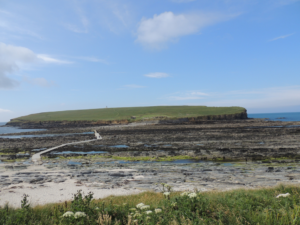
Between the 8th and 11th centuries AD, Scandinavian populations (usually known in this period as ‘Vikings’) settled in various areas of the North Atlantic, from Britain to Greenland. These migrations led to the establishment of long-distance connections and the establishment of diasporic communities that maintained close links with each other. This paper will focus on the Viking settlement of northern Scotland and Iceland, two regions that present different characteristics: while in Scotland the Viking settlers encountered already established communities (most notably the Picts) with which they interacted both violently and peacefully, in Iceland they arrived in an empty land without previous human occupation. These different scenarios had implications in the way Scandinavians settled in, and adapted to, the new lands. This talk will particularly focus on aspects of everyday life in the first hundred or so years after the initial Scandinavian settlement. The things people do and create in their everyday lives are fundamental for understanding how identities are produced, represented, or transformed, and can have an extraordinary effect on individuals and society. Through the investigation of houses, burials, and their material assemblages, the everyday life of the Viking Age in these areas will be explored.
Researching the oppida in the 21st century: New perspectives on a European phenomenon
Prof. Dr. Manuel Fernández-Götz (University of Oxford)
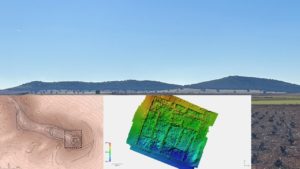
The end of the Iron Age was a period of profound changes for temperate European societies: from Portugal to Slovakia, communities developed large fortified settlements known as oppida. Many of these sites can be regarded as towns, constituting an urban phenomenon that represented the nucleation of population and activities during a period of demographic growth and increase in artisanal production and trade. This paper will provide an overview on the latest state of research about the oppida, focusing particularly on three main topics: 1) the reasons for their widespread development within just a few decades (endogenous and exogenous factors); 2) the question of the sustainability of the oppida, including their provisioning with foodstuffs; and 3) the interplay between the oppida and other Late Iron Age settlement types, from open agglomerations to farmsteads. The lecture will show how much the investigation of the oppida has progressed in the last few decades, but also suggest research questions and methodologies that can be especially fruitful towards the future.
The lectures and visits by leading European researchers are made possible thanks to a Mobility visit programme funded by the Slovak Academy of Sciences.
The lectures will be held in English.
We invite you to the International Conference Neolithic and Eneolithic of Our Countries 2025
 Registration for the 44th International Conference on the Neolithic and Eneolithic of Central Europe is open. We would like to welcome all those who wish to share their findings from rescue or systematic archaeological investigations, material culture studies, thematic syntheses, and finally student theses.
Registration for the 44th International Conference on the Neolithic and Eneolithic of Central Europe is open. We would like to welcome all those who wish to share their findings from rescue or systematic archaeological investigations, material culture studies, thematic syntheses, and finally student theses.
In its 44th year, the conference returns to Slovakia. It is organised by the Institute of Archaeology of the Slovak Academy of Sciences and the Zemplín Museum in Michalovce in cooperation with the Slovak Archaeological Society. It will take place from 23rd September to 25th September 2025 in the premises of the Zemplín Museum in Michalovce (map). The programme will consist of two days of lectures, a social evening and a full-day excursion, during which we will present the area of Zemplín with its rich Neolithic and Eneolithic settlement.
We welcome either topic-specific talks accompanied by a *.ppt presentation with a maximum length of 15 min, or colour-printed posters in DIN A0 format (841 x 1189 mm). Talks can be presented in Slovak, Czech and Polish, or in English or German.
Registration is a prerequisite for participation, the registration form in PDF form can be downloaded here. The application form can be sent to the email address neolit.eneolit2025@gmail.com until 31st May 2025. Participation is also conditional on sending an abstract of the presentation/poster in your native language and in English (recommended length 300-500 words). These abstracts will be published in book form, both in print and electronic versions.
Registered participants will receive a preliminary conference and field trip programme during July 2025. The final version of the programme will be published on the website in August 2025 and circulated to registered participants.
The conference fee was set at 65 €, discount for students (Bc., Mgr., PhD) at 30 €. The amount covers the cost of conference room and equipment rental, refreshments during breaks, a social evening, as well as travel costs and entrance fees during the excursion. Further information on the method of payment will be provided to registered participants.
29th International Conference on the Early and Middle Bronze Age in Central Europe
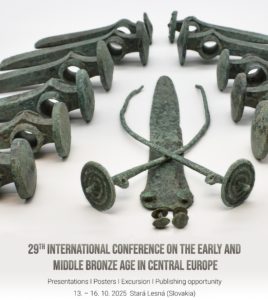 We are pleased to invite you to the upcoming 29th edition of the international conference focused on the current research of the Early and Middle Bronze Age in Central Europe. The call for in-person attendance and active participation is open to all those interested in sharing their findings from rescue and systematic excavations, studies on material culture, more complex thematic syntheses, as well as student works.
We are pleased to invite you to the upcoming 29th edition of the international conference focused on the current research of the Early and Middle Bronze Age in Central Europe. The call for in-person attendance and active participation is open to all those interested in sharing their findings from rescue and systematic excavations, studies on material culture, more complex thematic syntheses, as well as student works.
The conference, organized by the Institute of Archaeology of the Slovak Academy of Sciences in collaboration with the Slovak Archaeological Society at the Slovak Academy of Sciences, will take place on October 13–16, 2025, at the SAV Academia Congress Center in Stará Lesná (map). The program will include three presentation days, a social evening, and a full-day excursion.
We invite contributions in the form of oral presentations with a max. duration of 15 minutes, accompanied by a presentation *.ppt format. Participants may also submit a poster in a printed color version in DIN A0 format (841 × 1189 mm). Speeches may be given in Slovak or Czech, but the text of presentations and posters are required in English or German.
Registration is available via the online form until June 30, 2025. To complete the registration, each participant has to submit a presentation/poster abstract (300–500 words) in English. After the processing, the texts will be published in the printed abstract book.
100th anniversary of Bohuslav Klíma’s birth
We invite you to the scientific conference in honour of Bohuslav Klíma, his work, and his legacy will be organized. The conference will be held in the Institute of Archaeology, Czech Academy of Sciences, Brno (Čechyňská 363/19) during March 26–28th.
If you want to contribute to this meeting, please send us a title and an abstract (1,000–2,000 characters, including spaces) of your presentation by Jannuary 31st, 2025 to klima100@arub.cz. We prefer contributions related to the scientific activities of Bohuslav Klíma, including Pavlovian (Gravettian) and cave excavations.
Preliminary program:
March 26th: Registration, presentations (ARÚB, Čechyňská street)
Evening: Social event held in the same bulding
March 27th: Presentations
March 28th: Excursion (Slovak Museum in Staré Město near Uherské Hradiště)
PhD studies (2024)
PhD studies topics starting in 2024, the exact date of the admission procedure will be specified. It will probably take place in June 2024.
Dominika Oravkinová received the ‘Danubius Young Scientist Awards’
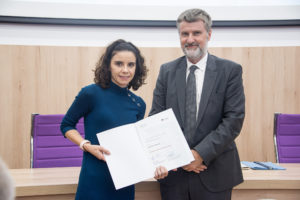
‘At the ‘Danubius Awards 2023,’ several researchers from regions traversed by the Danube River were honoured for their academic achievements. On October 19, researchers who significantly contributed to the development of the Danube region were recognized. Our colleague, Mgr. Dominika Oravkinová, PhD., received the ‘Danubius Young Scientist Award.’
The ‘Danubius Award’ assessment was established in 2011 to commend individuals who have excelled in their dedication to the Danube region through their academic work or cultural creations.
This award is open to all disciplines and, among other things, helps promote the involvement of young scientists in research and cultural creation related to the Danube River basin. The awards are granted by an independent expert jury. These awards also contribute to the implementation of the European Union strategy for the Danube Region, adopted by the European Parliament in 2011.
We warmly congratulate Dominika!



